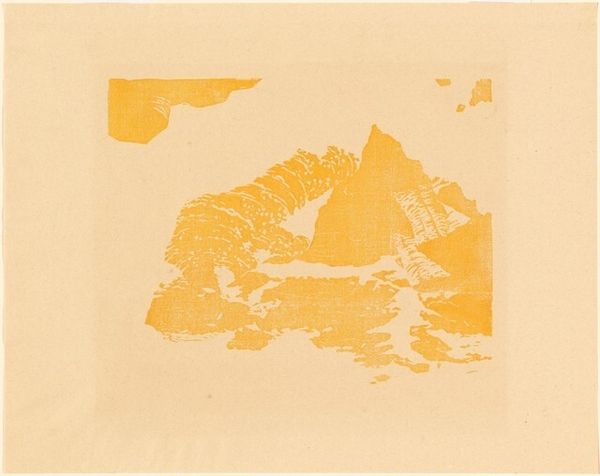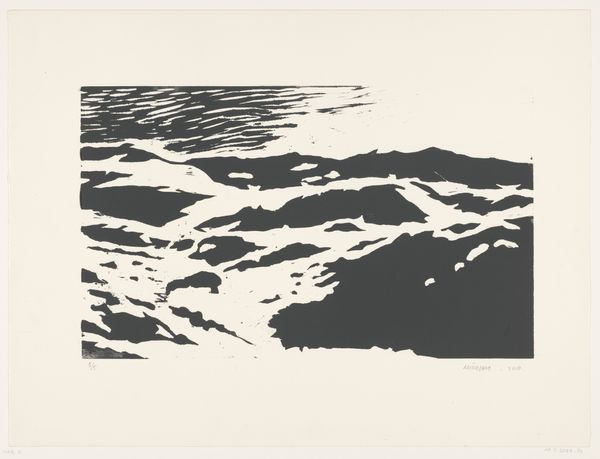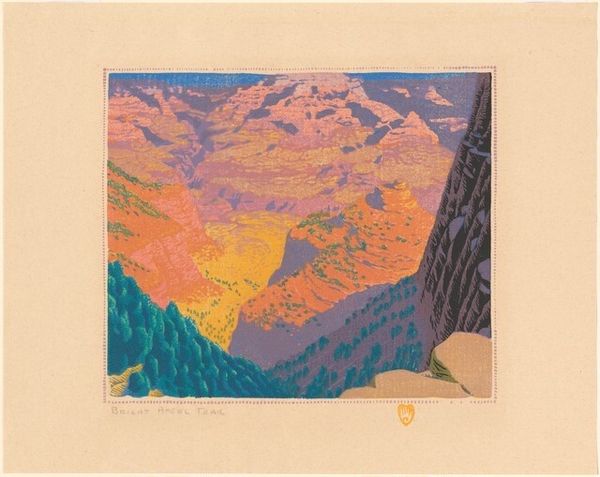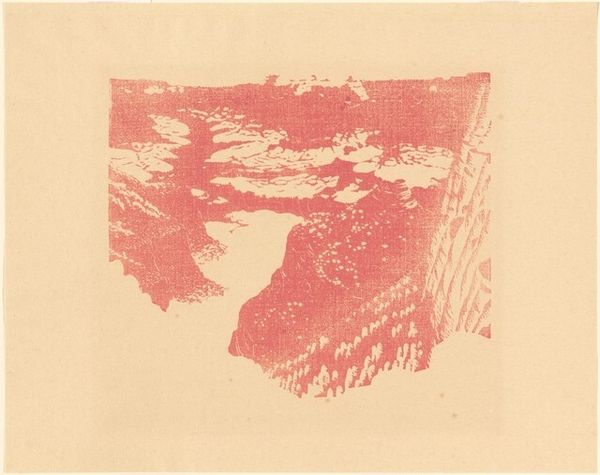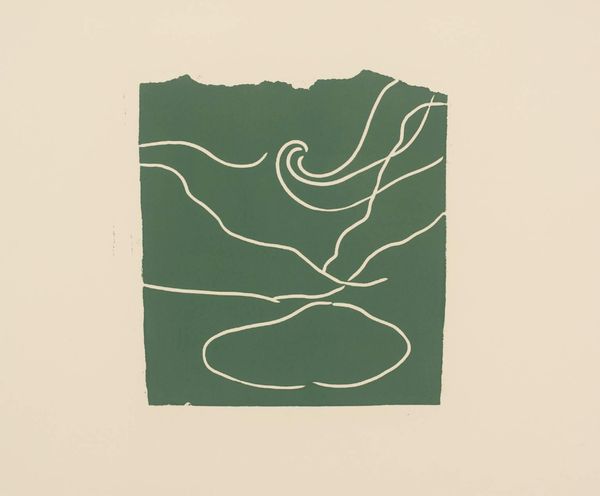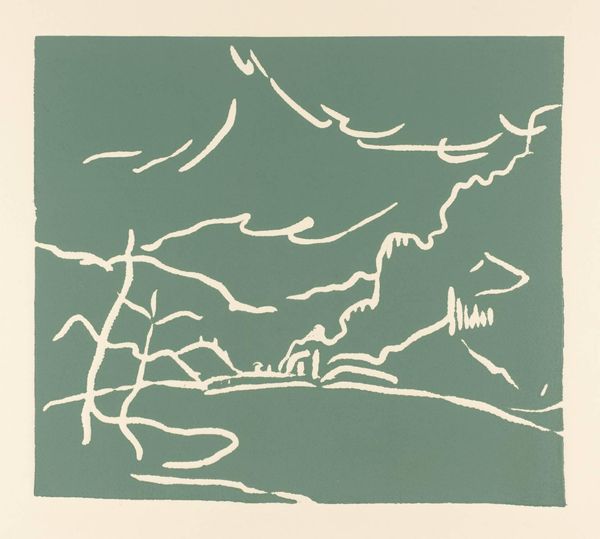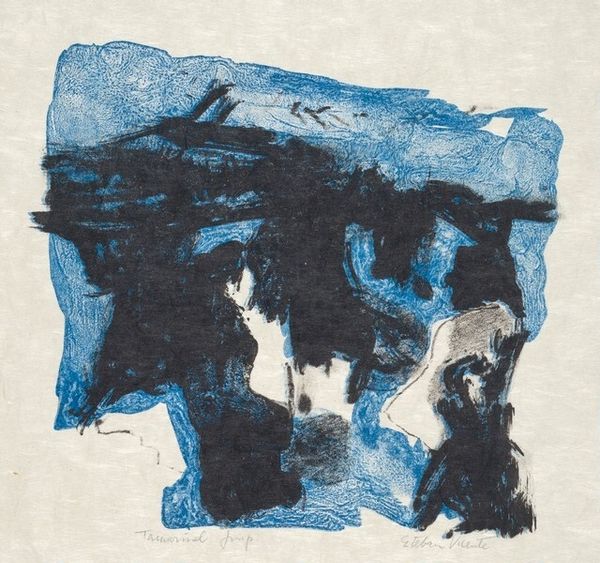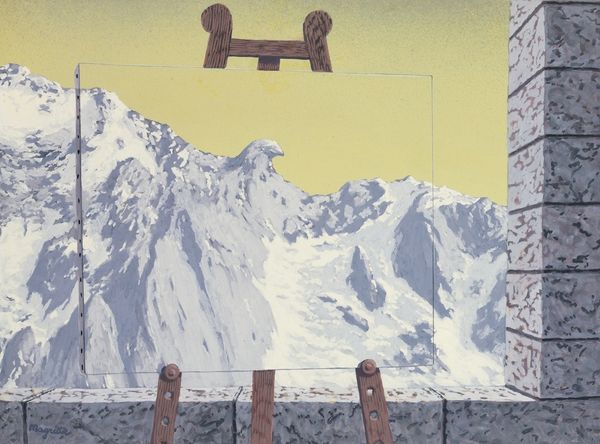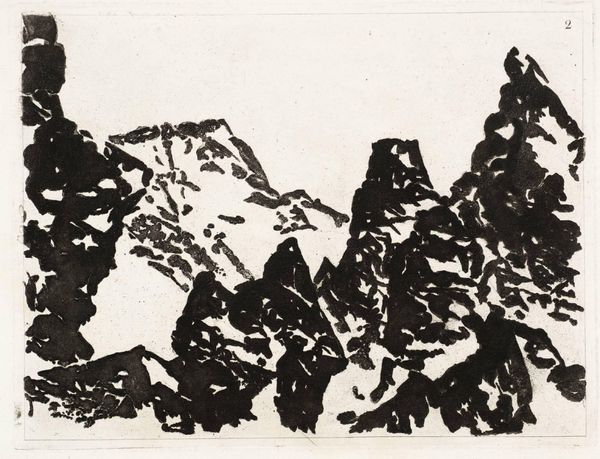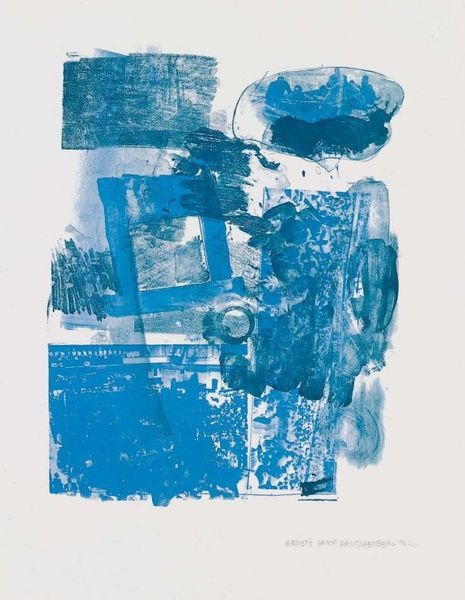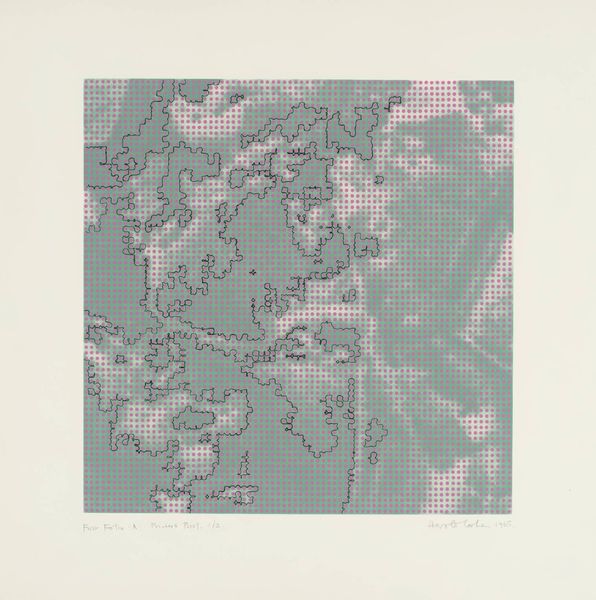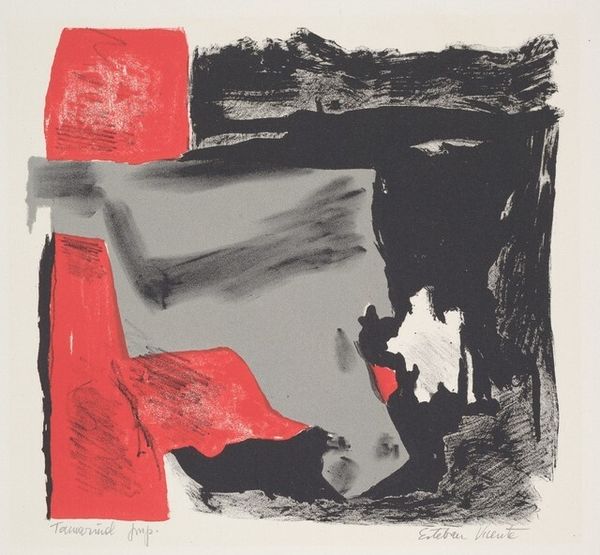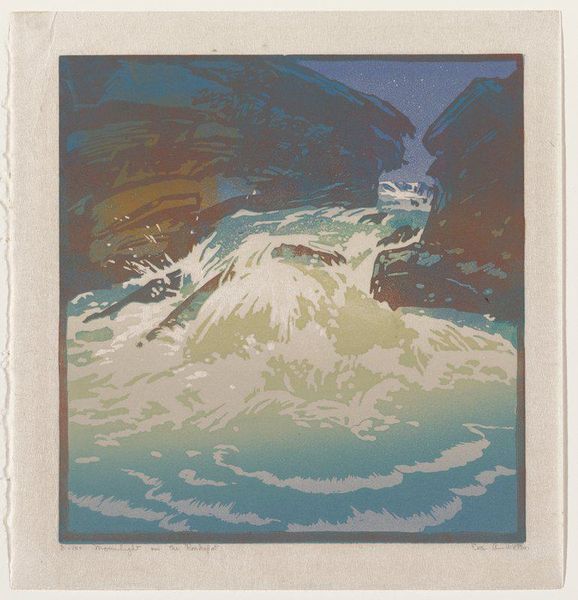
print, linocut, woodcut
# print
#
linocut
#
landscape
#
linocut print
#
woodcut
Dimensions: image: 23.5 × 27.62 cm (9 1/4 × 10 7/8 in.) sheet: 34.29 × 43.18 cm (13 1/2 × 17 in.)
Copyright: National Gallery of Art: CC0 1.0
Editor: This is Gustave Baumann's "Bright Angel Trail," a linocut print from 1922. The blue against the cream paper is striking, almost graphic in its simplicity. It's so clean, so pared down… what exactly draws your eye when you look at this? Curator: What is compelling here is the negative space, how the composition uses what is *not* there to define form. The blue acts less as representation of the landscape and more as pure, distilled form. Notice the careful balance between positive and negative; how Baumann creates visual rhythm by alternating mass and void. Editor: I see what you mean. It’s like the cream paper *is* the rock face, shaped by these blue… voids? So the *absence* of ink defines the mountains? Curator: Precisely. The interplay allows the eye to complete the forms. Consider the blocky shapes. Does that abstraction flatten the space or amplify it? Editor: I think it flattens it, almost like a decorative pattern. Which feels, maybe, deliberate? The stark contrast between the planes of blue and blank parchment-colored canvas simplifies the landscape down to its purest shapes, minimizing any kind of narrative and foregrounding the work's formal components and structure. Curator: Exactly! The effect of surface texture and color is achieved, and this surface asserts itself. Editor: So Baumann emphasizes shape and form through a kind of flattening process. It’s like he wants us to appreciate the raw materials of art. The colors. The composition. How interesting. Curator: Indeed. Perhaps even inspiring.
Comments
No comments
Be the first to comment and join the conversation on the ultimate creative platform.
